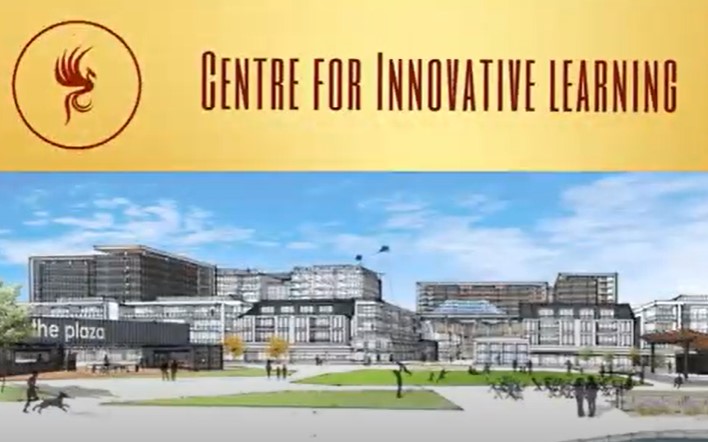An Award-Winning Vision for A School of the Future
The Centre for Innovative Learning only exists in the minds of a few innovative educators, but we sure wish it was real.

At Tech & Learning’s Innovative Leader Summit, educators from across the country were challenged to design a school of the future. Teams consisting of award-winning educators were asked what their ideal school of the future would look like with unlimited funding.
Over the course of an afternoon at the Liberty Science Center in New Jersey, educators shared their thoughts and experiences around topics such as mastery vs. grading and classroom design and pedagogy as they developed their visions for what the perfect school of the future might look like. The teams then shot video and/or created slide shows to present their concepts. While each one shared an impressive vision of a school that we wish existed IRL, the winning team distinguished themselves with a school called The Centre for Innovative Learning.
Winning team members T'Nesia Hurley, Melinda Gooch, Melissa Jacobs, Robert McCartney, Lisa Nielsen, Christopher Lockhart, Jennifer Parker, and Faith Alcantara envisioned a school in a repurposed shopping mall that would provide an equitable and innovative education for all students. The well-thought-out and innovative vision the group had for their school left attendees at the conference impressed – there were at least two audible gasps.
Reclaiming Wasted Space
Once-thriving shopping malls across the country now lay empty and abandoned due to changing consumer habits. The vision for The Centre for Innovative Learning is built around utilizing these spaces and reclaiming and converting the standard elements of a big shopping mall into an educational wonderland.
“We're going to have a high school and elementary school and middle school using reclaimed storefronts that are going to be turned into classroom spaces with flexible seating and flexible tables,” said Melissa Jacobs, director of library services for New York City’s Department of Education, during the group’s presentation.
These storefront classrooms would make full use of what was left behind by each storefront’s former occupants. For example, leftover items at the Apple store would provide the school’s advanced tech, the local arcade would become an esports arena, while the beauty salon would be transformed into a cosmetology school classroom. The food court would be a reimagined school cafeteria staffed by students using farm-fresh ingredients and providing concessions to the former movie theater, which would be converted to a performance arts space for student shows.
Another aspect would be having the Barnes & Noble bookstore be reborn as a cutting-edge school library. “All the bookshelves are going to be repurposed for a K through 12 collection accessible to all students. Seating and tables will be flexible and reused,” Jacobs says. “There will be not one, not two, not three but four full-time certified school librarians. One for each school elementary, middle, and high, and a full-time makerspace librarian.”
Tech & Learning Newsletter
Tools and ideas to transform education. Sign up below.
A Focus on Students
As impressive as the Centre for Innovative Learning’s physical location is, the vision is focused on student achievement over architectural flare. “We are going to provide the students what they need to be most successful in life,” said Christopher Lockhart, Director of Technology at Princeton City Schools in Ohio. “Schedules will be co-created with the students and the staff to create the schedule that each student needs to be successful.”
The school will have certified teachers on staff but also engage in partnerships with community experts outside of the school, including politicians and business and industry experts who can help foster career pathways for students.
Programs would also be developed for parents to be integrated into everything the school does and for older students and alumni to help younger students.
The school’s logo is a phoenix rising from the ashes, with the slogan, “Igniting the flame in all learners.” While it’s not a real school, the Centre has already ignited a lot of curiosity.
Erik Ofgang is a Tech & Learning contributor. A journalist, author and educator, his work has appeared in The New York Times, the Washington Post, the Smithsonian, The Atlantic, and Associated Press. He currently teaches at Western Connecticut State University’s MFA program. While a staff writer at Connecticut Magazine he won a Society of Professional Journalism Award for his education reporting. He is interested in how humans learn and how technology can make that more effective.

